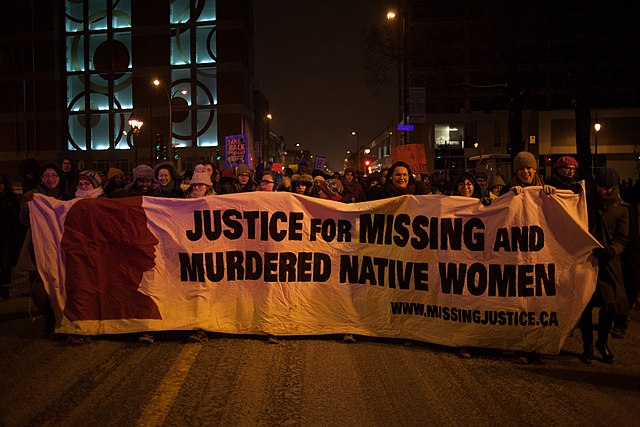
By Howl Arts Collective, on February 15th 2014, from Wikimedia Commons
Earlier this year the loss of Emily Pike reverberated throughout the Native American community. Initially, Emily had been labeled a runaway, having last been seen leaving her group home on January 27th, 2025, suspected of trying to get back home to her reservation where her mother lived.
Her case first came to light February 14th, 2025—nearly three weeks after her initial disappearance—when Emily’s dismembered remains were found in a remote forest 100 miles from her group home.
Pike was just 14 years old. Her favorite color was pink, she loved cats and drawing, and her family described her as someone who was quiet but who loved to laugh and who always wore a smile.
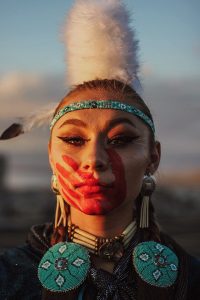
She was a daughter, a niece, a cousin, but most importantly, she was just a child. A girl taken too soon. A person who deserved to be treated as such. But that’s the thing—this isn’t an isolated incident, nor is it the first of its kind. In fact, it is one of several cases that are part of the “silent” crisis impacting the Indigenous community.
The MMIW (Missing and Murdered Indigenous Women) movement started in Canada in the 1990s with the hope of raising awareness around the violence that Indigenous women face at a disproportionate rate.
In fact the crisis has been deemed a genocide in Canada and an epidemic in the U.S. with a 2016 study by the National Institute of Justice reporting that 84% of American Indian and Alaska Native Women have faced violence in their life time
The same study revealed that 4 out of 5 Indigenous women have already faced some type of abuse/violence within their lifetime. Ranging from physical violence, sexual violence, stalking, and/or psychological violence.
In a 2019 report by the CDC it was revealed that murder is the 3rd leading cause of death for Indigenous women ages 10-24. Which, in itself is alarming, but taking into account that Indigenous people only make up 2% of the population it makes it all the more significant.
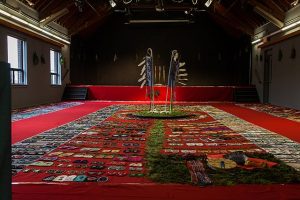
In seeking justice for Emily, tribes across the country have rallied around her story, demanding more accountability and attention to the MMIW crisis. For many Indigenous youth and students, Emily’s story hits close to home.
“I felt mad, my skin was boiling,” said Aiyana Faber-Castillo, a Butte College Native student. “I don’t think any youth deserves to be treated like that. Like, she wasn’t even 18 yet. And it’s sad that it keeps happening to girls so young—they don’t deserve that. I can’t imagine how she was feeling or how scared she must’ve felt.”
These feelings aren’t uncommon. Many Indigenous teens and young adults now live with an ever-present awareness of this crisis.
“Now it’s like… Other Native youth are probably scared to go out on their own and live their lives just because they are Indigenous and they know that that means they’re more likely to be put in those situations… I mean, I know I am.”
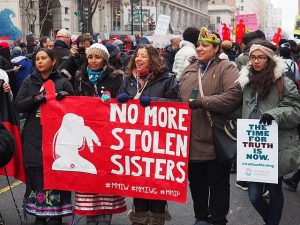
When asked what the MMIW movement means to her personally, she said “It means honoring the missing and murdered Native women and representing them through us, because we’re their voice. They’re no longer here to represent for themselves, protest for themselves, advocate for themselves.”
Despite the growing awareness, there’s still a strong sense that Native communities are often ignored in broader conversations about safety and justice.
“I definitely feel like there is something more that can be done. It just feels like everything is being overlooked when it comes to Native communities, like nothing’s really being done, and it’s just going to keep on happening.”
This reality not only shapes views on justice, but it also impacts how many Indigenous people navigate their daily lives.
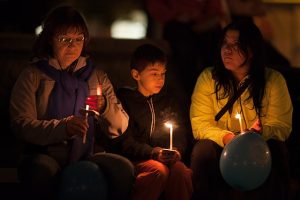
“I wouldn’t say that it affects my identity, but it affects me in the way that… when I’m walking around… just knowing the things that have happened to other Native women and people, and just carrying that with me, it’s heartbreaking. I feel like every family has a story or has gone through something like that.”
“You never know who you can trust. It could be anyone,” she added.
When asked what they wished more non-Native people understood about the MMIW crisis, the student said: “That it’s a thing people are actually going through and have to live with. Like, almost every Indigenous person that is out there advocating to bring attention to this issue probably has someone that they’ve lost or who they miss, who hasn’t been found, that they’re advocating for. Just… more respect and understanding for the movement and those affected by it.”